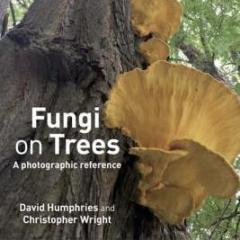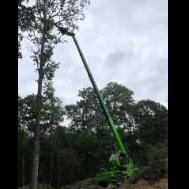-
Posts
23,485 -
Joined
-
Last visited
-
Days Won
3
Content Type
Profiles
Forums
Classifieds
Tip Site Directory
Blogs
Articles
News
Arborist Reviews
Arbtalk Knot Guide
Gallery
Store
Freelancers directory
Everything posted by David Humphries
-
It was Josh Other than the discussion here at Arbtalk I seldom get the chance to work & talk trees in the flesh with Arbs from across Europe like yourself, (last time was the Basque trip I did in 2009 and a hosting of Belgian Urban Foresters in 2010) so it was pleasant change to compare what we take as gospel from here in the UK Arb industry against what others are experiencing in places like Italy, Holland, Poland, Germany & the US. No better way to take stock of what you know (or what you think you know) Would be great to do it more often. Not sure the Mrs would be so keen .
-
Thank you for sharing this Guy, will have a longer look at it later. Looking at both but mainly the former. .
-

Tis the season to see Fungi, fa la la la la....
David Humphries replied to David Humphries's topic in Fungi Pictures
Second one is Rigidoporus ulmarius, the cinamon to orange coloured tube layer is the key ident feature. The ones on the stump are Sulphur tuft - Hypholoma fasciculare . -
Thanks for sharing .
-
I would think the one above is Pereniporia .
-
I try where I can, not sure on the brown furry bracket at the base of the Ash. Was it attached? If so then the culprit could be Perenniporia fraxinea If not attached its possible it might be Inonotus hispidus There are reports of Inonotus dryadeus on ash, but this fairly rare. Were there any gutation droplets on this bracket? .
-
They certainly do Paul, this was Żubrówka (Bison grass vodka).........smooth ! The bracket is the early stage of a developing Red Banded Polypore (Fomitopsis pinicola) fairly rare here in the UK but abundant where we were in the Bialowieza forest. It has quite a wide ranging morphology whist developing. .
-

Tis the season to see Fungi, fa la la la la....
David Humphries replied to David Humphries's topic in Fungi Pictures
A chance encounter with a solitary wrinkled peach (Rhodotus palmatus) whilst out inspecting dead elm regen. . -
Fungal stump garden Ganoderma (likely to be applanatum), Xylaria hypoxylon and the rhizomorphs of an Armillaria species. .
-
Ganoderma sp for the first one. It may be G. resinaceum, but I'm not sure. The brown spore that covers everything is the give away To help with Identification, get in the habit of taking a wedge of the flesh and an image of the pores for us, as it helps a lot. Second ones look like Corinus sp, possibly C. atramentarius .
-
-
Although originally (briefly) from Germany, I hadn't ever visited Poland on my European travels before. The people, culture and landscape were a very pleasant part of the experience and it was a trip that has left me with much to ponder, many questions and lots of new contacts to interact with. The place we stayed (Wejmutka Manor) was a fine base to relax and socialise and I would thoroughly recommend a stay if you're ever of the mind to visit this part of Poland. ACCOMMODATION .: bialowieza biodiversity academy, Wejmutka:. bia??owie?a, forest, biodiversity, workshop, nature, hotel .
-
The truly remarkable nature of this part of the forest is the quality of its biodiversity from the decaying of the fallen and standing dead wood to the saproxylic species that live & feed off them. You can not help but trip up on the fungi and beetles that are the protagonists of this living theater before your very eyes. some of the diversity of fungi can be seen here on this thread...... http://arbtalk.co.uk/forum/fungi-pictures/10467-travelling-fungalburys-4.html although a word to the wise, getting up close and personal to group of hornets to get a shot was not the brightest of ideas as I porceeded to take a couple of stings to my arm and head ! .
-
We also had the pleasure of experiencing a guided trip in to the Strictly Protected Area of the Bialowieza National Park which is regarded as Europe's finest example of 'virgin' primeval forest. A past article in the AA magazine by Luke Barley, Jamie Simpson & Zuza Kukelka (Issue 163-Winter 2013 ' In search of decay fungi in the primeval forest of Bialowieza' debates whether the forest is truly a natural wildwood. It does nonetheless have a number of very large and old trees reaching out of the understory canopy. Some of these oaks are up to and above 40+ meters in height ! https://en.wikipedia.org/wiki/Bia%C5%82owie%C5%BCa_Forest .
-
In the evening we were treated to an outdoor showing of the film 'The Secret Life of Trees' by the Polish Wildlife Film Maker Artur Homan [ame] [/ame]. The cinema was a communist built Rail Station that is no longer used, which has now become a community park and impromptu cinema. .
-
The first day involved an early morning trip out with a guide to witness some of the European Bison heard (500+ numbers) which roam the forest and forages out on the meadows. This was followed by a visit to a local fungi exhibition and then back to the center for a series of lectures by the book authors, Ted Green (English Nature and the Crown Estates adviser & co-founder of the Ancient Tree Forum) & Peter Del Tredici (Senior Research Scientist, Arnold Arboretum of Harvard University) .
-
I've recently returned from a short trip to the east of Poland near to the Belarus border. I thought I would share the experience. The weekends focus was a seminar looking at the background to a new book that is being written by three authors (Dirk Dujesiefken (Institute of Arboriculture, Hamburg, Germany) Jan Willem De Groot, (Dutch Consulting Arborist) & Neville Fay, (Chartered Arboriculturist, Director at Treework Environmental Practice) The book will look at how our industry can work toward an integrated vision for tree care throughout its lifetime from establishment, through to maturity and on in to its veteran & ancient life stages. Our hosts were the European Union Life project and more specifically the Polish 'Roads to Nature' project which campaigns promoting trees in Poland's rural landscape as habitats and ecological corridors. http://ec.europa.eu/environment/life/project/Projects/index.cfm?fuseaction=search.dspPage&n_proj_id=4346 The delegates came from Poland, Holland, Germany, Italy, Russia, USA & the UK. Picture credit - Jakub Jozeczuk.
-
I would think the first image is Abortiporus biennis. Have a look at the fungi directory images in the link from the main website for more photos and info....... Abortiporus biennis - the Blushing Rosette - David Humphries’s Fungi Directory - Arbtalk.co.uk | Discussion Forum for Arborists As for the others, the images are not too clear, the last may be desiccated Polyporus squamosus .
-
Robert I think this is a declining tree in poor health rather than a retrenching tree. Difficult to tell from that image I'm afraid. Thanks for putting it up in the thread though. .
-

Tis the season to see Fungi, fa la la la la....
David Humphries replied to David Humphries's topic in Fungi Pictures
Nice find . -
Meripilus giganteus .
-
D8 methinks .
-
No worries, you're welcome my guess would be Xerocomus (Boletus) chrysenteron .
-
Definitely a Bolete sp as it has pores rather than gills which rules out Amallaria species. But not radicans .






















.jpg.9bc7b6e2d2cb93067e9ae43cf84ebb6b.jpg)

.jpg.63787289fbebc5b889c52d8a0a1c0c64.jpg)


.JPG.b67e75a0157a8b03c77e0963539b5a20.JPG)



















